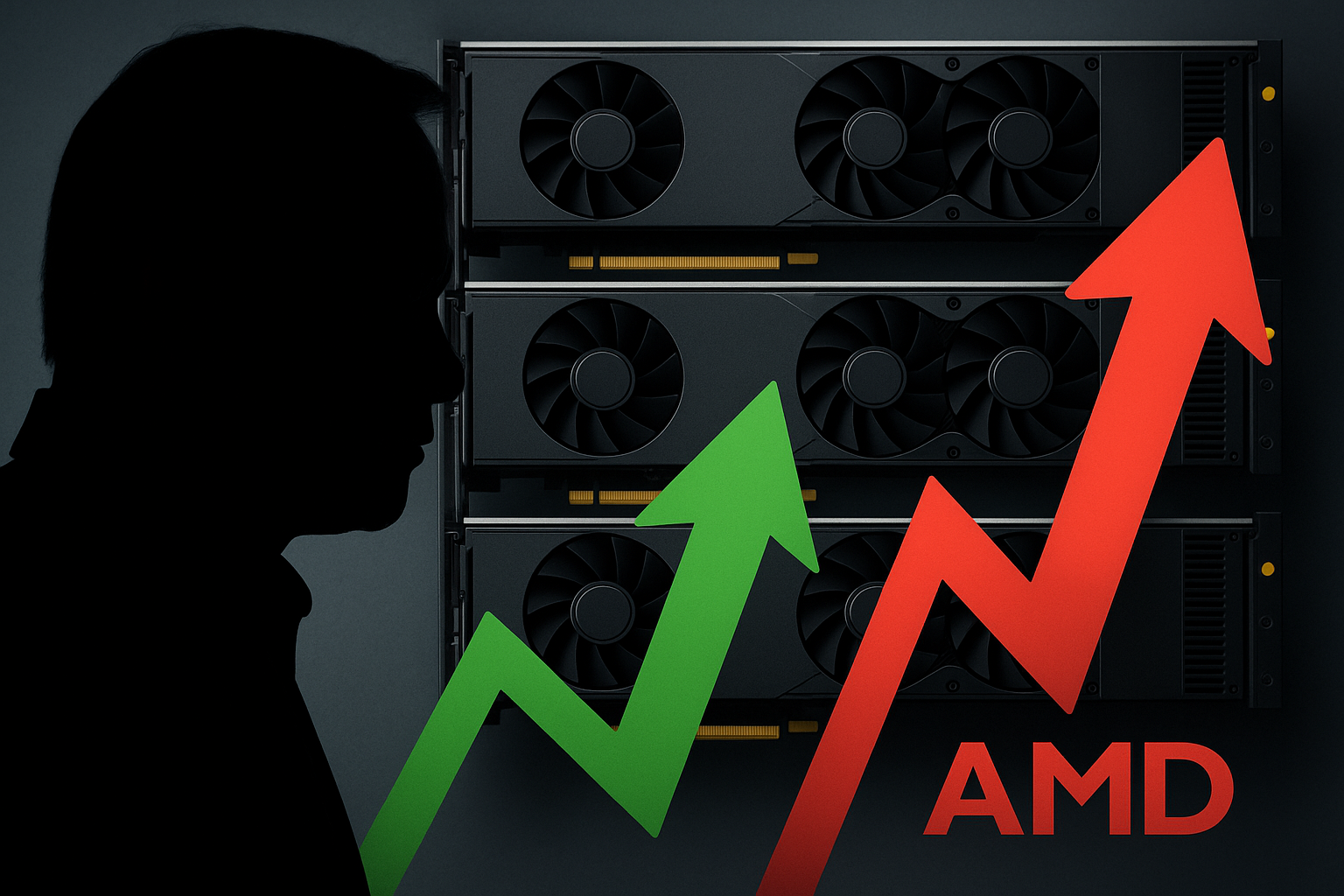Nvidia’s Huang Calls AMD-OpenAI 10% Warrant Move “Surprising” - Signals AI Chip Wars Heating Up
By Tredu.com • 10/8/2025
Tredu

“Surprising” Words From Huang: Nvidia Pushback on AMD-OpenAI Deal
In a pointed public reaction, Nvidia CEO Jensen Huang said he was “surprised” by AMD’s deal to grant OpenAI warrants allowing it to acquire up to 10% of AMD as part of a chip supply agreement. The comment marks a rare direct critique from the long-time NVIDIA leader and underscores accelerating tensions in the AI compute ecosystem.
Huang reportedly told CNBC that “I’m surprised they would give away 10% of the company before they even built it,” characterizing the move as bold and imaginative, implicitly challenging AMD’s strategy.
The AMD-OpenAI Deal in Brief
Supply Commitment & Equity Incentive
The deal between AMD and OpenAI involves a multi-year commitment: GPUs totaling ~6 gigawatts will be supplied over time, beginning with 1 GW deployment in H2 2026. As part of the agreement, OpenAI receives warrants to acquire 160 million AMD shares at a nominal price, equivalent to roughly 10 % ownership if fully vested.
Vesting is contingent on performance milestones, including delivery volumes and price thresholds, that escalate in terms of AMD valuation.
AMD Gains a Foothold in AI Compute
The arrangement gives AMD a stronger footing in a space long dominated by Nvidia. Analysts view it as a bold signal that OpenAI is diversifying its supplier base and hedging against overreliance on Nvidia.
Indeed, the market responded: AMD shares surged over 20-25 % intraday following the announcement.
What Huang’s Reaction Suggests About the AI Chip Battle
Defensive Guardrails & Strategic Framing
Huang’s surprise serves three signals:
- Guarding the narrative
By publicly questioning the structure of the AMD-OpenAI deal, Huang subtly casts doubt on the viability or wisdom of issuing large vested warrants before product delivery. This injects skepticism into market discourse. - Defensive posturing
Nvidia has long dominated AI compute. Huang’s pushback may be a tactic to dissuade over-bold gambits or force AMD/OpenAI to justify their terms under scrutiny. - Elevating competitive stakes
The comment frames the AMD-OpenAI pact as a rivalry gambit. In effect, Huang is drawing attention to the heightening competition, signaling that Nvidia sees the threat seriously.
OpenAI Diversification = Supplier Leverage
AMD’s warrant structure structurally aligns OpenAI’s incentives with AMD’s success. If OpenAI vests and exercises, it becomes a significant stakeholder. That’s a departure from supplier-client relationships, and it gives OpenAI more leverage across both AMD and Nvidia.
By diversifying compute procurement, OpenAI reduces dependency, and supply risk, with Nvidia. This move also pressures Nvidia to counter with strategic or financial incentives of its own.
Market & Strategic Impacts
Stock & Valuation Ripples
- AMD saw a massive revaluation, with multiple analysts revising targets upward.
- Nvidia shares dipped slightly, likely due to perceived competitive pressure, but remain fundamentally strong given its dominance in AI GPU architecture.
Execution, Risk & Timing
The real test lies in execution: meeting delivery schedules, scaling MI450 yields, and meeting price/valuation hurdles. If those falter, warrants may not vest fully, and the strategic upside shrinks.
Timing also matters: OpenAI must manage its compute growth with capital efficiency. Overcommitting, or misaligning with hardware development cycles, could backfire.
Broader AI Ecosystem Effects
- Other AI firms may adopt similar equity-backed supplier deals, accelerating a new financial model in AI infrastructure.
- Chipmakers (Intel, Broadcom, others) may be drawn into more strategic, equity-driven partnerships.
- Downstream buyers, cloud providers, enterprises, must re-evaluate cost curves, vendor dependencies, and bargaining positions.
How Investors Might Position
- AMD as optional leverage
Given the high upside but execution risk, investors may size into AMD exposure via options or phased entries. - Nvidia as a defense position
Despite competitive pressure, Nvidia’s leadership, scale, software stack, and ecosystem make it a durable core holding. - Watch compute ecosystem names
Companies in cooling, interconnects, AI system ops, and supply chain players may benefit from the arms race in infrastructure. - Catalyst monitoring
Key items: 1 GW shipment in H2 2026, vesting milestones, MI450 yield curves, Nvidia counters or incentives, chip output delays or supply bottlenecks.
In sum, the Huang surprised AMD-OpenAI comment is a flashpoint in the evolving AI chip war. With AMD now structurally tied to OpenAI and Nvidia on alert, the compute supply landscape just got much more contested. Expect fights over performance, incentive design, and scaling to define the next era.

How to Trade Like a Pro
Unlock the secrets of professional trading with our comprehensive guide. Discover proven strategies, risk management techniques, and market insights that will help you navigate the financial markets confidently and successfully.


